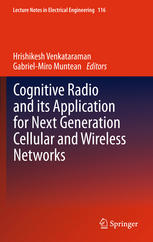

Most ebook files are in PDF format, so you can easily read them using various software such as Foxit Reader or directly on the Google Chrome browser.
Some ebook files are released by publishers in other formats such as .awz, .mobi, .epub, .fb2, etc. You may need to install specific software to read these formats on mobile/PC, such as Calibre.
Please read the tutorial at this link: https://ebookbell.com/faq
We offer FREE conversion to the popular formats you request; however, this may take some time. Therefore, right after payment, please email us, and we will try to provide the service as quickly as possible.
For some exceptional file formats or broken links (if any), please refrain from opening any disputes. Instead, email us first, and we will try to assist within a maximum of 6 hours.
EbookBell Team

4.8
14 reviewsThis book provides a broad introduction to Cognitive Radio, which attempts to mimic human cognition and reasoning applied to Software Defined Radio and reconfigurable radio over wireless networks. It provides readers with significant technical and practical insights into different aspects of Cognitive Radio, starting from a basic background, the principle behind the technology, the inter-related technologies and application to cellular and vehicular networks, the technical challenges, implementation and future trends. The discussion balances theoretical concepts and practical implementation. Wherever feasible, the different concepts explained are linked to application of the corresponding scheme in a particular wireless standard.
This book has two sections: the first section begins with an introduction to cognitive radio and discusses in detail various, inter-dependent technologies such as network coding, software-based radio, dirty RF, etc. and their relation to cognitive radio. The second section deals with two key applications of cognitive radio – next generation cellular networks and vehicular networks. The focus is on the impact and the benefit of having cognitive radio-based mechanisms for radio resource allocation, multihop data transmission, co-operative communication, cross-layer solutions and FPGA-level framework design, as well as the effect of relays as cognitive gateways and real-time, seamless multimedia transmission using cognitive radio.